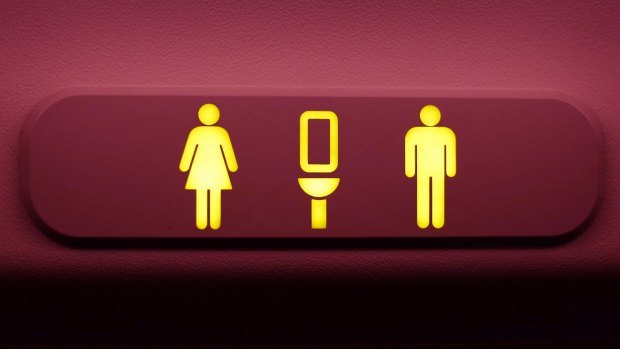This was published 4 years ago
Does toilet waste ever drop from flying aircraft?
By Michael Gebicki

Danger, danger!Credit: iStock
It's rare enough to make the news, but it happens. And when it does it's most common along the flight paths of aircraft as they approach their final destination.
Aircraft toilets operate on a vacuum system – that whooshing sound when you flush. The waste goes into a holding tank in the rear of the aircraft and it's pretty nearly a fail-safe system but if there's a leak, the waste can seep out of the fuselage.
If the aircraft is sufficiently high, it instantly freezes in the cold atmosphere, still attached to the aircraft like a barnacle. When the aircraft descends, the icy chunk of unmentionables thaws as the temperature warms, detaching itself from the aircraft skin. And if you happen to be in the path of its downward trajectory, you're about to experience one of the more memorable moments in your life.
What comes down is known as "blue ice", since it's mixed with a blue-tinted disinfectant, and there are several reports each year of blue ice smashing through roofs and onto cars, although to date there has never been a report of falling blue ice causing a human fatality.
Why do planes need to dump fuel before an emergency landing?
The reason is that maximum take-off weight is far greater than maximum landing weight.
A mid-range, single-aisle aircraft such as the Boeing 737-800 has a maximum fuel load of about 20,000 kilograms at take-off, which accounts for a quarter of its maximum take-off weight of about 80,000 kilograms.
However, the maximum landing weight of that aircraft is about 66,000 kilograms, 14,000 kilograms less than its maximum take-off weight.
If a problem was to develop that required the aircraft to land anywhere short of its destination the pilot needs to dump fuel to the point where the total weight of the aircraft is below the maximum landing weight.
If the aircraft's mass on landing was in excess of its maximum landing weight the undercarriage could collapse.
Fuel is usually dumped at sea or over a rural area, ideally at an altitude of about 2000 metres, which allows fuel to dissipate as vapour instead of raining down to the ground.
Fuel is vented through valves on the trailing edge of the wings, well away from the engines to avoid any possibility of combustion.
See also: The next generation of Airbus planes will track your toilet visits
See also: New plane toilets are so small passengers can't fit into them
Sign up for the Traveller newsletter
The latest travel news, tips and inspiration delivered to your inbox. Sign up now.